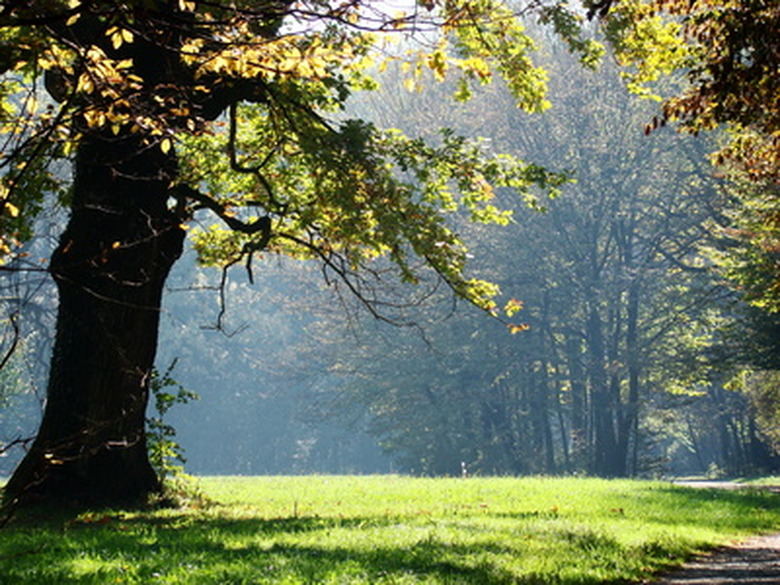Plants To Grow Around Oak Trees
Oak trees provide ample shade, and their large silhouette is a dramatic presence in the landscape. The acorns also provide food for wildlife. All that shade is nice for cooling off your yard or house in the summer, but it challenges the gardener trying to grow flowers, shrubs or other plants under oak trees. Look to nature to find plants that naturally grow under oak trees, and create a native woodland garden with edible berry bushes and pretty wildflowers. For the health of the oak tree, avoid planting anything within about 10 feet of the trunk, and be careful when digging to avoid damaging the oak tree's roots.
Currants and Gooseberries
Shrubs in the Ribes genus, such as currants and gooseberries, grow in oak forests. The pink or white flowers will attract butterflies and later produce fruit that birds eat. People also eat the fruit, and currants and gooseberries can be made into jam, preserves or pie. Plant Ribes species in open patches of sun or just outside the drip line of oak trees.
- Oak trees provide ample shade, and their large silhouette is a dramatic presence in the landscape.
- For the health of the oak tree, avoid planting anything within about 10 feet of the trunk, and be careful when digging to avoid damaging the oak tree's roots.
Serviceberries
Also called juneberries, saskatoons or shadblow, serviceberries (Amelanchier spp.) grow as either shrubs or small trees, although they tend to stay somewhat small under oak trees. Serviceberries produce fragrant white flowers early in the spring, followed by fruit that tastes like a spicy-sweet blueberry. Several species of serviceberries are native to different regions in North America.
Anemones
Many woodland flowers have adapted to bloom early in the spring, before the trees leaf out and while the understory is still sunny. Some early spring wildflowers that you can plant under oak trees include anemones, also called windflowers (Anemone spp.) Anemones have white, buttercup-like blossoms, and the plants tend to be low to the ground.
- Also called juneberries, saskatoons or shadblow, serviceberries (Amelanchier spp.)
- Anemones have white, buttercup-like blossoms, and the plants tend to be low to the ground.
Wild Sarsaparilla
This plant, related to ginseng, is common in many oak or pine forests. The flowers of wild sarsaparilla (Aralia nudicaulis) are puffy white globes that later mature into a cluster of dark blue or purple berries. The leaves are very large and showy, and sarsaparilla is a good forb for filling in space under an oak tree. The root can be used for flavoring home-made root beer. Sarsaparilla does best in cooler climates.
Hummingbird Sage
Gardeners in warm, dry climates like California can grow hummingbird sage (Salvia spathacea) under oak trees. The red-orange flower spikes can reach up to 2 feet tall, and they are popular with hummingbirds and butterflies. Hummingbird sage will grow in both sun and shade.
- This plant, related to ginseng, is common in many oak or pine forests.
- The leaves are very large and showy, and sarsaparilla is a good forb for filling in space under an oak tree.
References
- "Sierra Club Naturalist's Guide to the North Woods of Michigan, Wisconsin, Minnesota and Southern Ontario"; Glenda Daniel and Jerry Sullivan; 1981
- "Newcomb's Wildflower Guide"; Lawrence Newcomb; 1977
